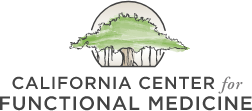Antimicrobial Treatments for Lyme Disease
The conventional medical approach to Lyme disease treatment in adults is a ten to 21-day course of the antibiotic doxycycline.1 However, a growing body of research shows that this treatment is insufficient, if not completely ineffective, for cases of chronic Lyme disease. Functional medicine offers a far more comprehensive approach to the antimicrobial treatment of Lyme disease. Read on to learn about the types of antimicrobial treatment options available, and how they can be combined for optimal effect.
Botanicals and Essential Oils
Botanical medicines (herbal or plant based) are foundational interventions in the functional medicine approach to Lyme disease. There are many botanical protocols available for Lyme disease; however, it can be confusing trying to determine which protocol and products to use. At CCFM, we have extensive experience using botanical protocols for Lyme and can create a protocol that is customized to your specific needs. Some of the botanical protocols and companies we use for the botanical treatment of Lyme include the Buhner Protocol, Byron White Formulas, Beyond Balance, and Nutramedix.
Herbalist Stephen Harrod Buhner, a pioneer in the use of botanical medicines for Lyme disease, has developed a botanical protocol that we use with many of our Lyme patients at CCFM. The protocol is centered around several keystone herbs, including Japanese Knotweed, Cat’s Claw, and Andrographis. Botanicals that can be added to the core protocol, based on the patient’s needs, include Astragalus and Smilax; Buhner recommends Astragalus as a preventative measure for those who live in Lyme endemic areas. You can learn more about Stephen’s protocol in his book Healing Lyme: Natural Healing and Prevention of Lyme Borreliosis and Its Coinfections.
Byron White Formulas, Beyond Balance, and Nutramedix are three companies we also routinely use for the botanical treatment of Lyme disease. Each company provides antimicrobial botanical formulas designed to target Lyme and coinfections as well as restorative formulas designed to aid detoxification, regulate inflammation, and alleviate neurological dysfunction.
Excitingly, emerging research supports the efficacy of the botanicals in the above mentioned protocols for the treatment of Lyme disease and coinfections. A recent study published in Frontiers in Medicine, in which CCFM’s Dr. Schweig was a contributing author, has added to the growing body of evidence that certain botanicals can effectively target B. burgdorferi and coinfections.2
Some of the botanicals with anti-Borrelia activity include:
- Cryptolepis sanguinolenta
- Scutellaria baicalensis (Skullcap)
- Artemisia annua and artemisinin, a concentrated extract from the Artemisia plant
- Black walnut (Juglans nigra)
- Cat’s Claw (Uncaria tomentosa)
- Japanese knotweed (Polygonum cuspidatum)
- Oregano oil
- Cinnamon bark essential oil
- Clove essential oil
Of note, this is one of the first studies to show that Cryptolepis has activity against the Lyme spirochete. This herb has a long history of use in Africa for malaria, and has been used in the Lyme community to help treat the co-infection Babesia.
Certain essential oils also demonstrate anti-Borrelia activity 3, including:
Why use botanicals and essential oils in Lyme treatment? Botanicals and essential oils tend to exert antimicrobial activities through a multitude of mechanisms, as opposed to pharmaceutical antibiotics' more specific, limited actions. Certain botanicals and essential oils target multiple forms of Borrelia, including the spirochete and persister forms, while also addressing Lyme coinfections. Furthermore, many botanicals and essential oils have selective antimicrobial properties, meaning they target harmful microbes while sparing beneficial microbes, such as the helpful bacteria that reside in our gastrointestinal tracts.
Antibiotics
In some cases, prescription antibiotics can be a central component of Lyme disease treatment. However, while they are essentially the only treatment for Lyme offered in the conventional medical model, they are but one antimicrobial treatment option in the functional medicine model
The International Lyme and Associated Disease Society (ILADS), a medical society dedicated to the diagnosis and appropriate treatment of Lyme disease and other tick borne infections, has created a helpful set of Lyme treatment guidelines outlining evidence-based guidelines around the antibiotic treatment of the disease.4 For acute Lyme disease, ILADS recommends a 4-6 week course of the antibiotics doxycycline, amoxicillin, or cefuroxime.5 On the other hand, antibiotics used in the treatment of chronic Lyme disease may include doxycycline, amoxicillin, clarithromycin, rifampin, and tinidazole. The ILADS approach also advocates combining different antibiotics as needed to effectively target Borrelia and it’s different forms, as well as to target co-infection organisms.
We may also combine antibiotics with botanical medicines, discussed next, as several botanicals appear to have synergistic antimicrobial effects in the management of Lyme disease and coinfections.
Some doctors who treat Lyme disease hand patients a prescription for an antibiotic (or two or three) and leave it at that; however, at CCFM, we recognize that antibiotic treatment is but one piece of the puzzle. Antibiotics are powerful tools that can make a significant difference, but they are best utilized as part of a comprehensive treatment approach, not as a sole treatment. A comprehensive treatment approach may include antibiotics with probiotics, which may attenuate the microbiome-disrupting effects of the antibiotics, diet and lifestyle changes, and interventions that support detoxification, decrease systemic inflammation, and boost your body's immune function, among other interventions. If these areas are left unaddressed, response to treatment can be incomplete, and there is greater risk of relapse after treatment.
Disulfiram
Disulfiram is an interesting new option in the treatment of Lyme disease and certain Lyme coinfections. Disulfiram, also known by the generic name “Antabuse,” is a drug conventionally used for the treatment of alcoholism. It treats problem drinking by triggering nausea and vomiting when alcohol is ingested. However, in recent years, disulfiram has emerged as an effective treatment option for a completely different condition – Lyme disease.
How exactly has an anti-alcoholism drug come to be used in Lyme disease treatment? In 2016, in work funded by the Bay Area Lyme Foundation, researcher Jayakumar Rajadas was screening an array of pharmaceutical drugs for potential anti-Borrelia activity. During this process, referred to as "high-throughput screening" in the scientific community, he identified disulfiram as a candidate drug with anti-Borrelia activity.6 Subsequent in vitro research revealed that disulfiram is exceptionally effective at killing all forms of Borrelia burgdorferi, including the stubborn “persister” form that is highly resistant to antibiotics.7
While disulfiram is lauded by many as a breakthrough drug for Lyme disease, it is not without side effects. Emerging research indicates that disulfiram may trigger undesirable effects, including neuropathy, headaches, pain, and fatigue in some patients.8 Patients need to be monitored carefully while on the disulfiram protocol and much can be done with functional medicine to help patients better tolerate treatment. If you are interested in learning more, sign up for our email list; we are working on developing a comprehensive support program for individuals who want to use disulfiram for tick borne illness treatment using an innovative combination of disulfiram and functional medicine interventions.
Dapsone
Dapsone, an antibiotic historically used for the treatment of leprosy, is another emerging treatment for Lyme disease. Leprosy is a chronic but curable skin infection caused by a “persister” bacteria, a variant of a bacteria that is highly tolerant to antibiotics, called Mycobacterium leprae. Dr. Richard Horowitz, a pioneer in the treatment of Lyme disease, theorized that the antimicrobial effects of dapsone against this M. leprae persisters might carry over to the treatment of other persister bacteria, including B. burgdorferi persisters in Lyme disease. Subsequent clinical research conducted by Dr. Horowitz suggests that dapsone is active against the “persister” form of Borrelia burgdorferi and associated tick-borne coinfections such as Babesia.9 A minimum of 12 months of dapsone treatment may be needed to produce significant improvements in symptoms and prevent relapse.10
Like disulfiram and antibiotics, dapsone is not without side effects. It can cause anemia, a condition in which the body lacks sufficient red blood cells to carry oxygen to the body’s tissues, so patients must be monitored closely during treatment.
Methylene Blue
Methylene blue is a pharmaceutical drug new to the Lyme disease scene. Traditionally used for the treatment of methemoglobinemia, a condition in which the blood cannot carry oxygen properly, methylene blue has also been found to exert antimicrobial effects against the “persister” form of Borrelia burgdorferi, which is notoriously resistant to antibiotic treatment.11 It may also target Bartonella henselae, a common Lyme coinfection.12
There’s No One-Size-Fits-All Antimicrobial Treatment for Lyme Disease
Overall, there is no one-size-fits-all approach to the antimicrobial treatment of Lyme disease. Ultimately, our goal at CCFM is to find the combination of antimicrobial therapies that work best for you with a minimum amount of side effects. Simultaneously, we work hard to identify and support any imbalances across any of your body systems. In our experience, this combination offers a powerful and science based approach to helping you regain your health.
References
- Lyme disease treatment. The Centers for Disease Control and Prevention. Reviewed December 17, 2019. Accessed September 12, 2020. https://www.cdc.gov/lyme/treatment/index.html.
- Feng J, et al. Evaluation of natural and botanical medicines for activity against growing and non-growing forms of B. burgdorferi. Front Med (Lausanne). 2020; 7(6). doi:10.3389/fmed.2020.00006.
- Feng J, et al. Selective essential oils from spice or culinary herbs have high activity against stationary phase and biofilm Borrelia burgdorferi. Front Med. 2017; https://doi.org/10.3389/fmed.2017.00169.
- ILADS Lyme disease treatment guidelines. LymeDisease.org. https://www.lymedisease.org/lyme-basics/resources/ilads-lyme-disease-treatment-guidelines/. Accessed September 12, 2020.
- Cameron DJ, et al. Evidence assessments and guideline recommendations in Lyme disease: The clinical management of known tick bites, erythema migrans rashes and persistent disease. International Lyme and Associated Diseases Society. Accessed September 12, 2020. https://www.ilads.org/patient-care/ilads-treatment-guidelines/.
- Pothineni VR, et al. Identification of new drug candidates against Borrelia burgdorferi using high-throughput screening. Drug Des Devel Ther. 2016; 10: 1307-1322. doi: 10.2147/DDDT.S101486.
- Hari-Hara SK, et al. Repurposing disulfiram (Tetraethylthiuram Disulfide) as a potential drug candidate against Borrelia burgdorferi in vitro and in vivo. Bio Rxiv. 2019; doi: https://doi.org/10.1101/842286.
- Trautmann A, et al. Potential patient-reported toxicities with disulfiram treatment in late disseminated Lyme disease. Front Med (Lausanne). 2020; 7: 133. doi: 10.3389/fmed.2020.00133. eCollection 2020.
- Horowitz R and Freeman PR. The use of Dapsone as a novel “persister” drug in the treatment of Chronic Lyme Disease/Post Treatment Lyme Disease Syndrome. J Clin Exp Dermatol Res. 2016; 7(3): DOI: 10.4172/2155-9554.1000345.
- Leland DK. Touched by Lyme: Leprosy drug shows promise for Lyme treatment. LymeDisease.org. Published May 8, 2016. Accessed September 12, 2020. https://www.lymedisease.org/touched-by-lyme-dapsone/.
- Feng J, et al. Identification of additional anti-persister activity against Borrelia burgdorferi from an FDA drug library. Antibiotics (Basel). 2015; 4(3): 397-410.
- Li T, et al. Identification of FDA-approved drugs with activity against stationary phase Bartonella henselae. Antibiotics (Basel). 2019; 8(2): 50.






